Build-A-Rig Round 1, Zotac vs. Corsair: The $1500 PC Build Logs
by Ryan Smith & Ganesh T S on July 30, 2015 3:00 PM EST- Posted in
- Build-A-Rig
- Corsair
- ZOTAC

In early July we introduced our new Build-A-Rig project. The aim of the project, with help from our partners Newegg, is to approach the companies that make up the personal computing industry roughly every quarter and ask them to create a list of components within a certain budget aimed at a particular user base. Aside from that there are no rules, and at the end of the day the systems would be built and tested by AnandTech to be given away to our readers.
For each build we would interviews the individuals from the companies who we work with about the state of the PC industry and their chosen components, critique the components used, write up build logs for each system and then provide performance numbers. This round is our first, and we spoke to Chinny Chuang from Zotac and Dustin Sklavos from Corsair to create a parts list for a $1500 single monitor gaming system. Zotac went more for style and ease of use, Corsair went more for pure power, and we carefully dissected each component chosen in our previous.
But before we get to the performance numbers, we had a look at just how easy these two systems were to build, in the form of build logs. Ganesh tackled Zotac's Hey Good Lookin', while Ryan built up Corsair's The Accelerator. Game on!
Building Zotac's Hey Good Lookin'
Build Log by Ganesh TS
| Zotac's Hey Good Lookin' | |||
| Component | Selection | Price as Chosen |
90-Day Average |
| Processor (CPU) | Intel Core i5-4460 | $189.99 | $189.85 |
| Motherboard | GIGABYTE GA-Z97X-UD3H-BK | $139.99 | $138.17 |
| Graphics Cards (GPU) | Zotac GTX 970 AMP! Extreme Core Edition | $369.99 | $369.99 |
| Memory (DRAM) | Corsair Dominator Platinum 2x4GB DDR3-1866 C9 |
$99.99 | $104.27 |
| Storage (SSD/HDD) | Crucial BX100 500 GB SSD | $189.99 | $188.39 |
| Power Supply (PSU) | Rosewill Quark 750W Platinum | $139.99 | $135.31 |
| Chassis | NZXT S340 Black Steel ATX Mid-Tower |
$69.99 | $69.99 |
| CPU Cooling | Corsair Hydro Series H100i GTX* | $109.99 | $119.99 |
| Operating System | Windows 8.1 Full Version | $119.99 | $119.99 |
| Extras | SilverStone Sleeved 6-pin to 6-pin x2 |
$14.98 | $14.98 |
| SilverStone Sleeved EPS12V 4+4-pin |
$7.99 | $7.99 | |
| SilverStone Sleeved 24-pin |
$12.99 | $12.99 | |
| Samsung USB 2.0 External DVD Drive |
$23.99 | $23.82 | |
| DEEPCOOL RGB LED Strip with Controller |
$16.99 | $16.99 | |
| Total | $1,506.85 | $1,492.58 | |
*In our first breakdown of parts, we mislabelled this part as the H100i.
Zotac's big list of components came from Newegg in two shipments. The NZXT S340 case came in first. A big Newegg box with the rest of the components came in a couple of days later.
The NZXT S340 Black Steel ATX Mid-Tower chassis is a $70 case. Despite its low price, it offered a number of features aiding in easy assembly of the system.
- The side panels were easily removed without the aid of a screwdriver, thanks to the thumbscrews.
- The case was nicely divided into specific compartments for the installation of the motherboard, the PSU and the SATA drives.
- The case made it easy to manage the cables and keep them out of sight.
On the flip side:
- The case weighed in at slightly more than 7 kgs. when empty, and the sticky rubber feet made it a bit difficult to maneuver the case around when installing components.
- The sharp edges of the case had to be kept in mind while handling the case
- Though there was enough clearance between the edge of the motherboard area and the front panel for installing the fans of the liquid cooler in the build component list, readers contemplating the usage of the NZXT S340 and a liquid cooler would do well to research the fan / radiator dimensions (the clearance is 57mm)
The GIGABYTE GA-Z97X-UD3H-BK Z97 motherboard chosen by Zotac has all the features one would expect in a Z97 board, along with server-class burn-in testing. The board gave little cause for complaint during installation. It would have been nice to have a combo-connector to enable easy hook-up of the front panel cables to the motherboard pins, but, thankfully, the design of the internals of the case as well as the motherboard positioning alleviated the issue. In addition a USB key with the drivers for the post-build setup process would have been nice, but Zotac included an external DVD drive in the build list anyway. Having been accustomed to motherboards with Wi-Fi capabilities over the last few generations, I made the mistake of starting the build process away from a wired networking outlet. A temporary USB WLAN adapter helped in getting the updates processed once the OS was installed.
In my personal builds, I usually opt to go with the stock cooler that comes along with the CPU for cost. Zotac's build, however, use the Corsair H100i GTX liquid cooler for a couple of reasons - the fan noise is greatly reduced (thanks to the 120mm fans that mount on the front side of the chassis) and the CPU is able to keep a lower temperature under sustained loading compared to the stock cooler. In addition, the build process was also much simpler - there was no thermal paste to explicitly deal with, since the H100i GTX came with the thermal paste pre-applied. It was a simple matter of hooking up the cooler according to the directions provided and mounting the fans and the radiator. The thickness of the H100i GTX fans comes is 30mm, and that of the radiator is 25mm. There was no trouble mounting this in the 57mm clearance provided by the case. The Corsair H100i GTX also comes with the Corsair Link monitoring and control. The cable was connected to one of the free USB 2.0 ports on the motherboard.
The Rosewill Quark 750W Platinum PSU is modular in nature. Connecting cables to only the necessary outlets helped reduce clutter and made the installation / cable management much simpler. The yellow and red cables that came with the PSU unfortunately didn't go well with the rest of the colors on the motherboard side, and so the Silverstone sleeved cables that Zotac also included in the build came to the rescue. The PCIe power cables, 8-pin 12V connector as well as the 24-pin ATX power connector were terminated on the opaque side of the chassis and only the Silverstone sleeved cables were made to appear on the transparent side.
The Zotac GTX 970 AMP Extreme was installed in the PCIe 3.0 x16 slot closest to the CPU. The dual slot card also blocks one of the PCIe x1 slots in the board. The case itself has more than enough clearance to accommodate cards of this size, and the installation was a breeze. The top of the card has Zotac's logo that can be seen clearly through the transparent side of the case. The three fans cooling the GPU also point downwards and don't interfere with the look of the build.
Ian has already covered the details of the other component choices (Intel Core i5-4460, Crucial BX100 and the Corsair Dominator Platinum 8GB DRAM kit). There is not much to add, except that the looks of the Corsair Dominator Platinum and the light bar definitely enhance the visual appeal of the build during operation.
Zotac also included a DEEPCOOL RGB LED Strip with Controller in their build to spruce up the look of the system. There are multiple ways to mount it in the NZXT S340 chassis. We decided to leave it to the preferences of the eventual winner of the system to install it appropriately.


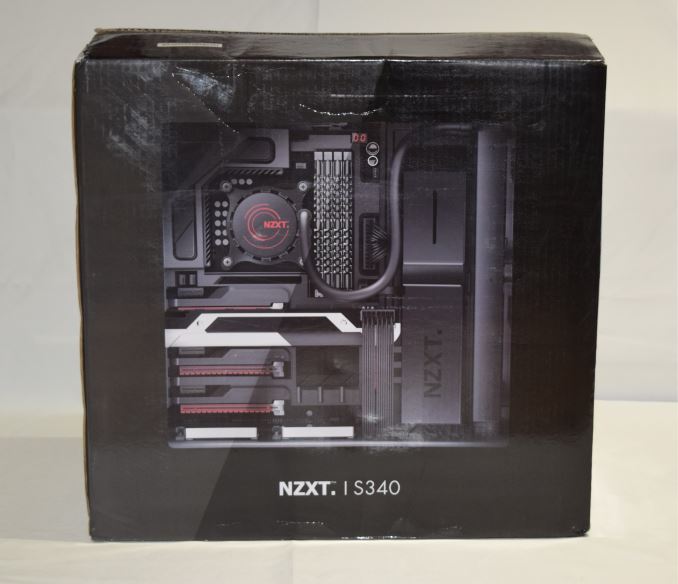

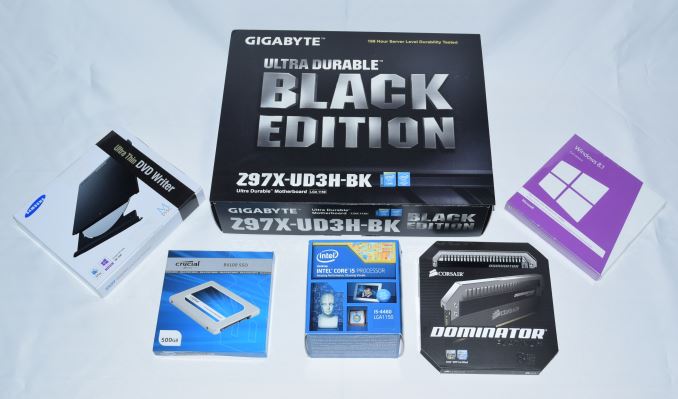
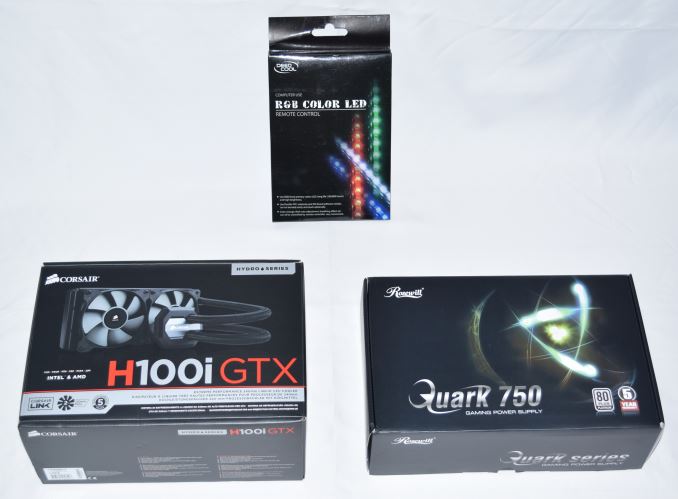
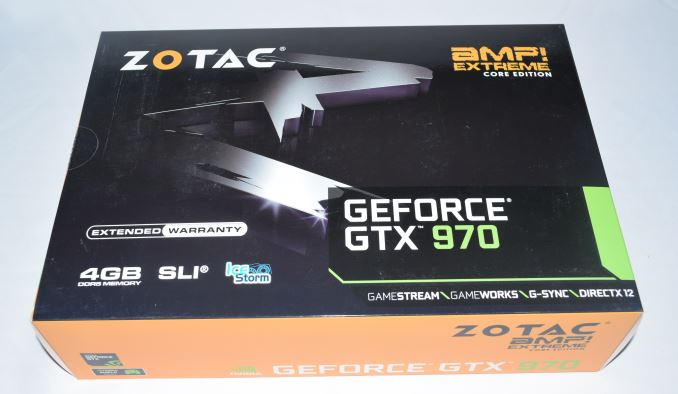
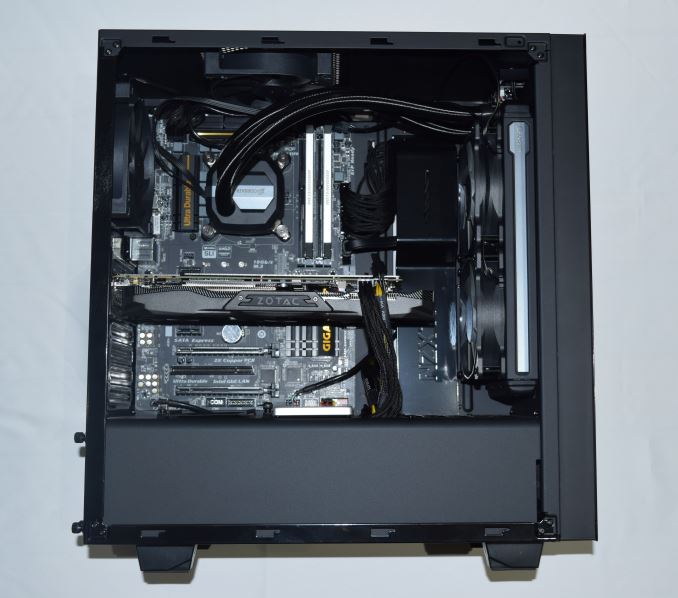
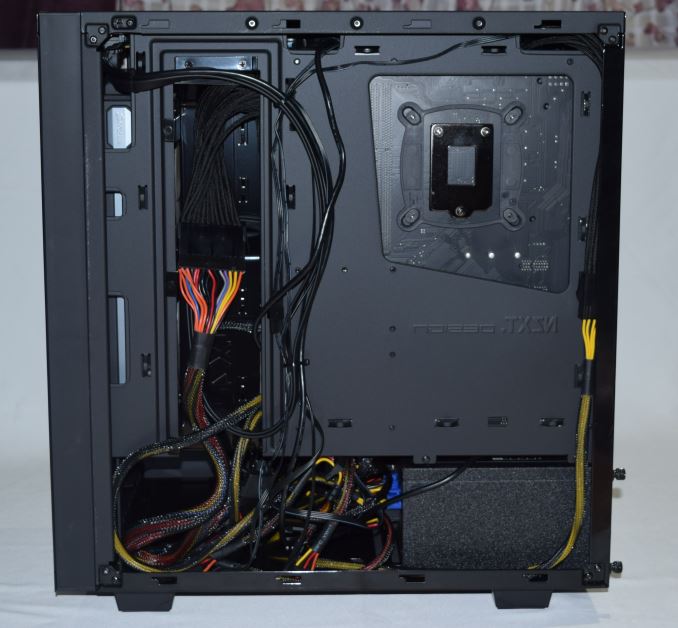
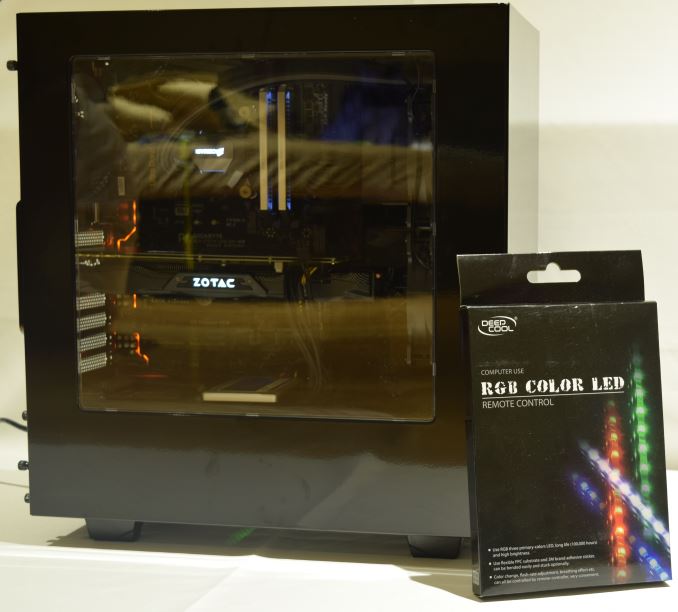








53 Comments
View All Comments
Gigaplex - Thursday, July 30, 2015 - link
Or go with a cheap, quiet cooler like the Coolermaster Hyper 212 range.HiTechObsessed - Friday, July 31, 2015 - link
Wow, I'm actually embarrassed by how completely imbalanced this is from AnandTech. You can get IDENTICAL performance, plus more storage, for under $1,000 by using parts that actually make sense.PCPartPicker part list: http://pcpartpicker.com/p/xVJ4TW
Price breakdown by merchant: http://pcpartpicker.com/p/xVJ4TW/by_merchant/
CPU: Intel Core i5-4590 3.3GHz Quad-Core Processor ($199.99 @ Newegg)
Motherboard: ASRock H97M Anniversary Micro ATX LGA1150 Motherboard ($71.98 @ Newegg)
Memory: Crucial Ballistix Sport 8GB (2 x 4GB) DDR3-1600 Memory ($44.49 @ Newegg)
Storage: Corsair Force LS 120GB 2.5" Solid State Drive ($72.99 @ Amazon)
Storage: Hitachi Deskstar 1TB 3.5" 7200RPM Internal Hard Drive ($46.00 @ Amazon)
Video Card: Asus GeForce GTX 970 4GB Video Card ($329.00 @ Amazon)
Case: Cooler Master N200 MicroATX Mid Tower Case ($44.88 @ Amazon)
Power Supply: SeaSonic 600W 80+ Bronze Certified ATX Power Supply ($56.98 @ Newegg)
Optical Drive: Lite-On iHDS118-04 DVD/CD Drive ($19.99 @ Newegg)
Operating System: Microsoft Windows 8.1 OEM (64-bit) ($102.98 @ Newegg)
Total: $989.28
Prices include shipping, taxes, and discounts when available
Generated by PCPartPicker 2015-07-31 11:50 EDT-0400
I mean, seriously? A $110 water cooler for a locked Intel CPU? An expensive Z97 board for a locked CPU? $100 for 8GB of RAM that add essentially nothing to performance? An overkill 750w PSu for an overkill $140? Tsk Tsk.
scotto330 - Friday, July 31, 2015 - link
You can do better @ Micro CenterCPU: Intel Core i5-4590 3.3GHz Quad-Core Processor ($159.99)
Motherboard: ASRock H97M Anniversary Micro ATX LGA1150 Motherboard ($59.99)
Use the savings and upgrade the primary storage:
Samsung 850 EVO 250GB 2.5-Inch SATA III SSD ($104.99 @ Amazon)
I would also swap out the video card from the 970's 3.4GB for same money to:
Gigabyte AMD R9 390 GDDR5 8GB ($329.00 @ Amazon)
I own a Gigabyte G1 Gamming GTX 970....just sayin.
Ian Cutress - Friday, July 31, 2015 - link
You do realise, from reading our previous Build-A-Rig articles, that the manufacturers in the competition picked the parts? We specifically interviewed both companies about their choices and the reasons behind them.http://anandtech.com/show/9417/build-a-rig-r1-1500...
Gonemad - Monday, August 3, 2015 - link
I would drop the water cooling, the elaborate ram, add a couple of TB of rust spinners, and perhaps a smaller SSD (60GB? 120GB?) for your specific game of choice. More specifically that game you play most.Achaios - Thursday, July 30, 2015 - link
@Ryan Smith: I disagree with your description of the PSU in p2. Tom's Hardware PSU List 2.0 has it classified as " Tier 3".QUOTE
Some Haswell compatible, some not (maybe unconfirmed). Still safe to use and stable, just lower quality components. Some capacitors maybe Japanese, but can include Taiwanese capacitors. Not really ideal in serious overclocking or super-high load situations, such as a Bitcoin mining rig or a high end gaming system.
UNQUOTE
So the "CS650M is" NOT "a capable PSU for a straightforward gaming system". It is just a short term solution until the owner of the said system can get a Tier 1 or Tier 2 PSU.
Can't really -still- blame Dustin however. Tier 3 PSU should be barely adequate for moderate overclocking (CPU+GPU).
fokka - Thursday, July 30, 2015 - link
you will have to do some _serious_ overclocking to even come close to the 650w of the corsair psu with a 88w cpu and a 250w gpu. i think the cm650m is will fare just fine.BrokenCrayons - Friday, July 31, 2015 - link
I have to agree with fokka regarding the PSU as more than adequate for anything the system can demand in an overclocked scenario. PSUs are in the same domain as screen resolutions where the respective industries would like very much for us to purchase based on acquiring higher numeric values without realizing any actual benefit. Most of the power supplies I've used over the past 20 years have been ultra cheap, sub-400 watt no-name supplies generally included in crappy cases as a gimme and I've only owned one that failed. The PSU is one component that I think is very much skimp-worthy when you're managing a budget for a build as premium supplies really don't reward a buyer with much added benefit.Shadowmaster625 - Thursday, July 30, 2015 - link
Why spend $250 on power and cooling for a 60 watt cpu and a 120 watt video card? Hello? Pass that bong pls.fokka - Thursday, July 30, 2015 - link
exactly what i said when the first article came out. you would really expect more sensible choices from a hardware company.